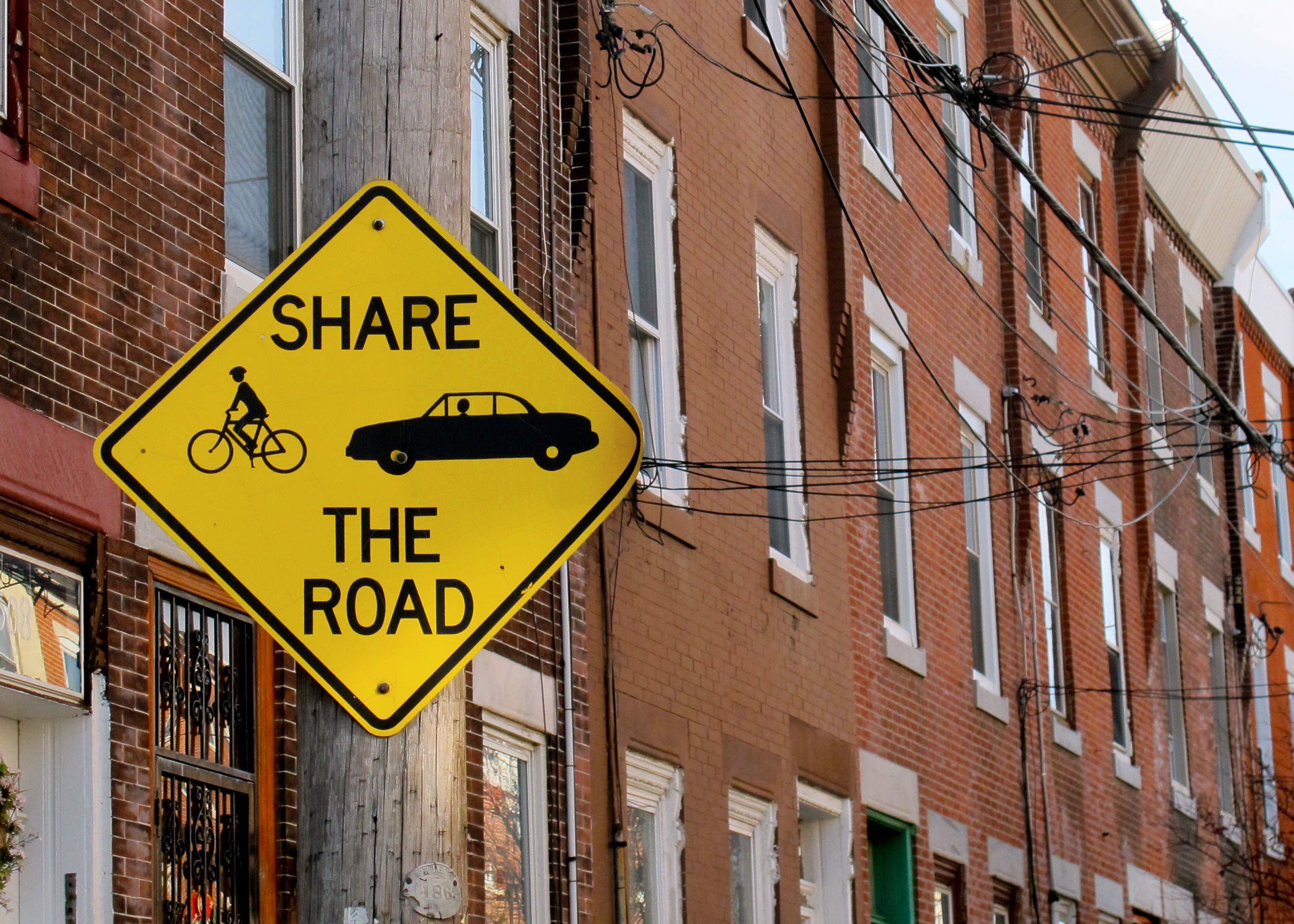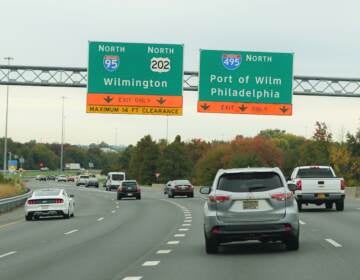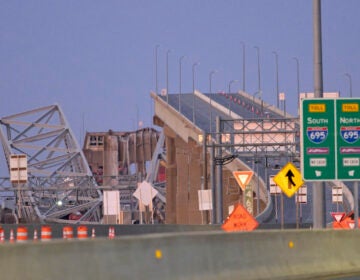The lane not taken

City streets are too often contested ground between cyclists and motorists. Community Contributor Nic Esposito wonders, isn’t there a better way to share the road?
The lane not taken
by Nic Esposito, Community Contributor
A few months back, on my birthday to be exact, my wife and I were biking through Northern Liberties on our way to dinner. I was riding down Second Street when I heard an air horn go off behind me. I turned around and was confronted by a red tractor-trailer bearing down on me. Before he plowed me over he switched lanes, giving me the perfect opportunity to call him a pretty nasty name.
Ahead, the traffic was stopped at the light in front of the SuperFresh, forcing me to pull up next to the truck where the window was opened and waiting for me. The man leaned out the window and yelled “Did you call me a (pretty nasty name).” I said that I did. But rather than yell or call me a (pretty nasty name) back, he calmly explained that he rode a bike too and he was simply trying to alert me to his presence. The light turned green, he shook his head and he pulled away. And I was left sitting there on my bike thinking, ‘There’s got to be a better way.’
Needless to say, my wife was not pleased with me. But it was my birthday and she gave me a pass. As I enjoyed dinner, I began to pity the situation that the truck driver and I were put in. In another world, he and I could have been good pals, riding our bikes down Kelly Drive or exploring Forbidden Lane. But instead, there we were, battling to the death on these streets that are not fit for bike nor car.
In reality, I got off lightly. Most bikers have to contend with motorists who don’t ride bikes and don’t know the perils. For those motorists, I’d like to explain a few maneuvers I was using, to give context. Second Street is the main thoroughfare from my neighborhood in Kensington to Center City. However, there is no bike lane. So I have to do what is called “taking the lane,” which is exactly what it sounds like, taking up a whole traffic lane to keep my distance from the unaware motorists who fling their doors open into traffic, thus causing an accident called “getting doored.” I was doored once. I almost broke my leg and my bike was destroyed.
I’m happy that there is now a law that will fine people should they cause this type of accident (hard to believe that this was not punishable before), but that won’t stop me from taking the lane. The closer you get to parked cars, the more liberties an impatient motorist will risk to overtake you, sparing only a few feet between you and their car. A majority of the time they may do this with perfect precision. But from the amount of people I see sending text messages from their drivers seats, I don’t have much faith.
This lack of confidence in motorists leads me to do the second maneuver that people take issue with; running red lights. Before I explain the thinking behind this, I would like to point out that bikers are some of the most aware people on the road. Not because we are of a higher intelligence or moral superiority. We are riding on an exposed piece of 40 pound metal that accelerates from 0-20 in about ten seconds. Our lives depend on it.
When we cyclists run a red light, we do so because we are trying to stay ahead of the traffic behind us. As I think motorists and bicyclists can both attest to, it’s frustrating that majority of the older city lights are on their own independent timers, thus making it almost impossible to program each light in sync. In the current system, we all speed through one green light, just to get to the next light that is turning red. This leads to a savage situation where only the swift survive. If I have to run a red light, then so be it.
I understand that it will take many hours of labor and a lot of money to swap out all of these lights, so maybe the city can start working on the other major improvement that could have helped me avoid my previous misunderstanding: a true North to South bike lane on the east side of the city. I’m aware that there are stretches in Center City on 10th, 13th, and 15th streets as well as that great lane from deep South Philly to the Art Museum on 22nd Street. But with the growing number of bike commuters in Kensington, Fishtown, South Philly and Temple, it’s time to solve this problem. The arterial streets that come to mind for me are 5th and 2nd St. Both have two lanes for traffic, both have parking on each side of the street. I also had a vision the other day of removing the traffic median down Broad St., and adjusting the lanes to add bike lanes down our most famous and well traveled thoroughfare.
I’m not sure how easy it would be for the city to do either of these projects, especially convincing the neighborhoods on both ends of Second St. to even contemplate giving up their parking spaces. But whatever they come up with, I hope the city does their part because I’m doing mine. When I take a lane, I stay in it and don’t weave in and out of traffic. I treat red lights like stop signs and make sure that I’m clear to cross rather than just glide right through. And I haven’t called a motorist a (pretty nasty word) since my birthday.
———
Nic Esposito is a Philadelphia urban farmer, author, and founder of The Head & The Hand Press.
Nic has previously contributed pieces to EOTS about the need to balance urban sustainability and neighborhood stability, and examined what Philadelphia’s vacant property reform efforts might mean for urban farming efforts like his on Emerald Street in East Kensington for the Eyes on the Street series, Situation Vacant.
———
Got something to say? You too can be a Community Contributor. Drop us a line at EOTS@planphilly.com with your ideas for a guest post.
WHYY is your source for fact-based, in-depth journalism and information. As a nonprofit organization, we rely on financial support from readers like you. Please give today.







